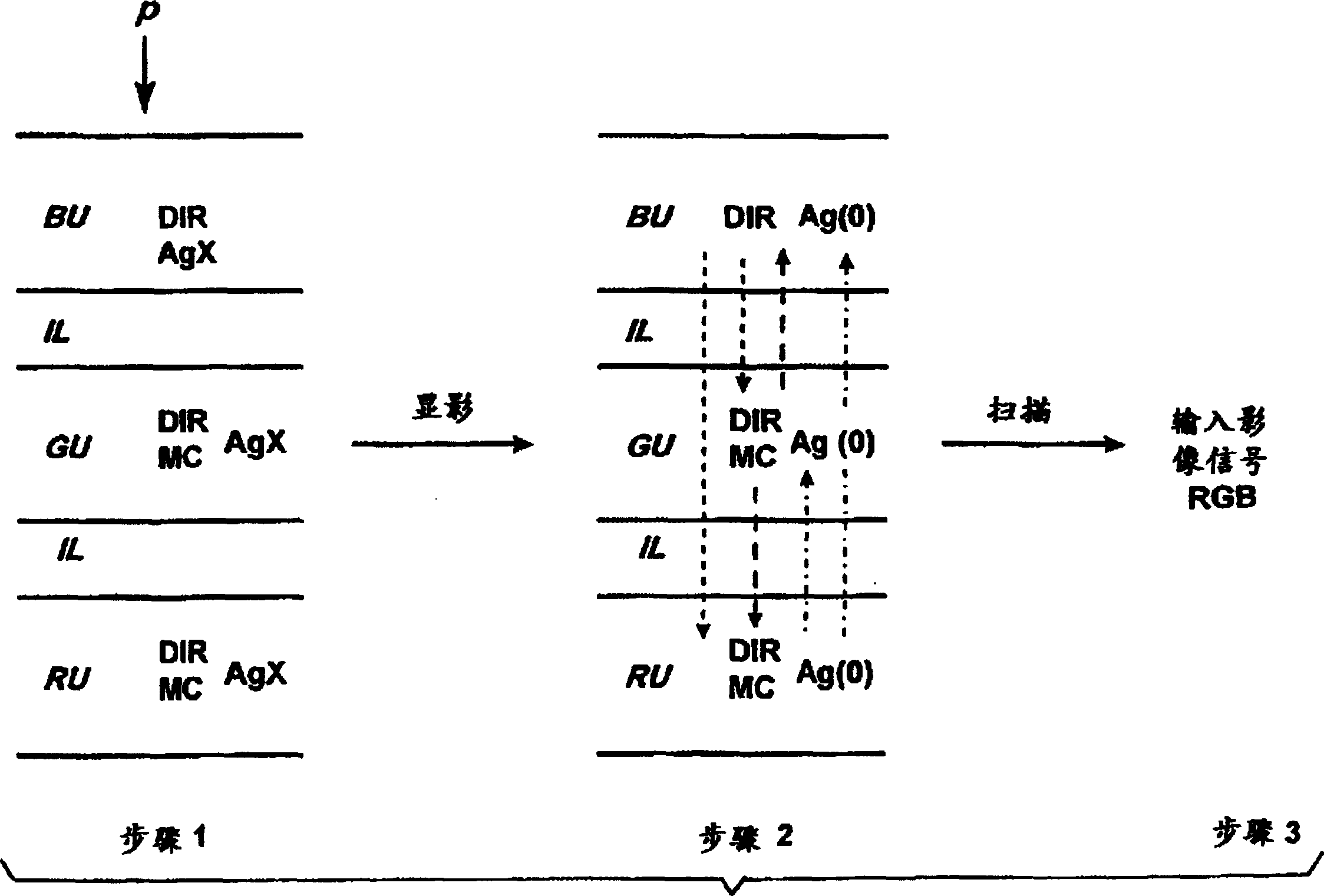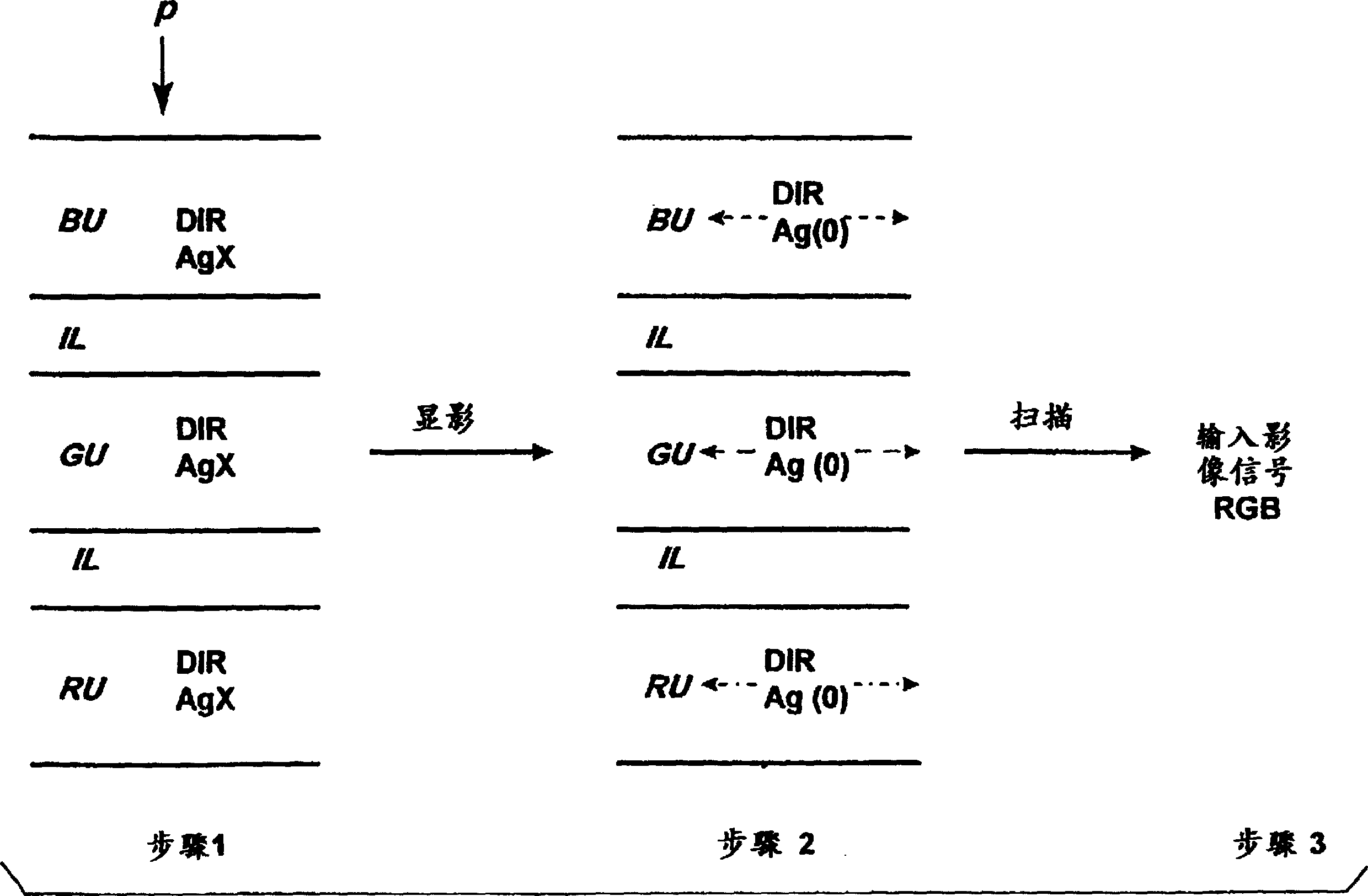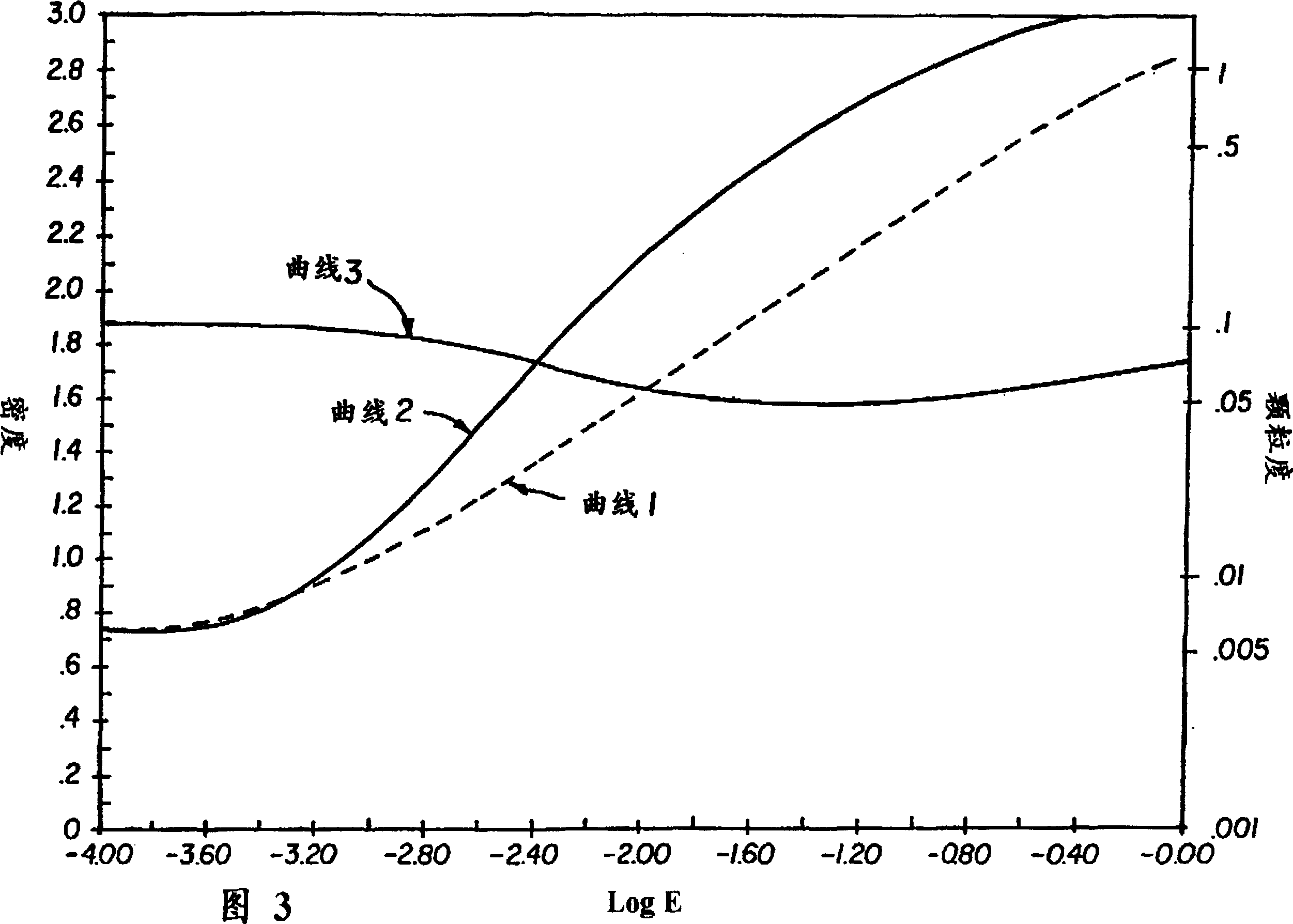Color negative film element and process for developing
A technology for color negatives and components, which is applied in multi-color photography technology, photography technology, color reduction processing technology, etc., and can solve problems such as problems with processing effects.
- Summary
- Abstract
- Description
- Claims
- Application Information
AI Technical Summary
Problems solved by technology
Method used
Image
Examples
Embodiment
[0211] The invention can be better understood by reference to the following specific embodiments. The suffix (C) designates a control or comparative color negative, while the suffix (E) designates an example color negative.
[0212] All coverages are in g / m 2 Units are reported in parentheses unless otherwise stated. Silver halide coverage is expressed in terms of silver. The symbol "M%" means mole percent. ECD and t represent average particle size. The halides in the mixed halide grains and emulsions are listed in order of increasing concentration. The gamma (γ) for each color record is the maximum slope of the characteristic curve between a point on the characteristic curve at a density of 0.15 above the minimum density (Dmin) and a point on the characteristic curve at a higher exposure level of 0.9 logE, where E is the exposure in lux-seconds.
[0213] Glossary of Acronyms
[0214] HBS-1 Tricresyl Phosphate
[0215] HBS-2 Di-n-butyl phthalate
[0216] HBS...
PUM
| Property | Measurement | Unit |
|---|---|---|
| thickness | aaaaa | aaaaa |
| thickness | aaaaa | aaaaa |
Abstract
Description
Claims
Application Information
 Login to View More
Login to View More - R&D
- Intellectual Property
- Life Sciences
- Materials
- Tech Scout
- Unparalleled Data Quality
- Higher Quality Content
- 60% Fewer Hallucinations
Browse by: Latest US Patents, China's latest patents, Technical Efficacy Thesaurus, Application Domain, Technology Topic, Popular Technical Reports.
© 2025 PatSnap. All rights reserved.Legal|Privacy policy|Modern Slavery Act Transparency Statement|Sitemap|About US| Contact US: help@patsnap.com



